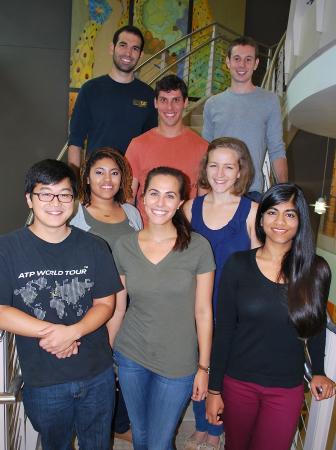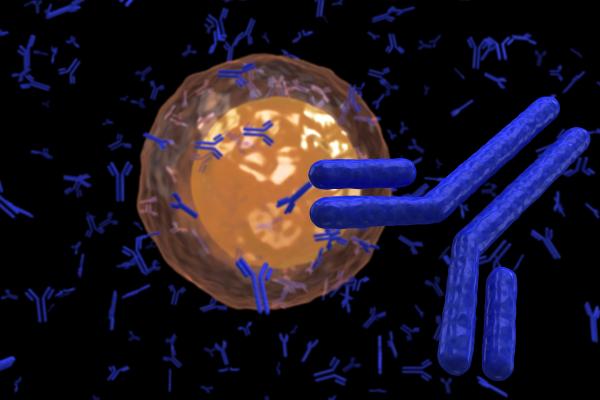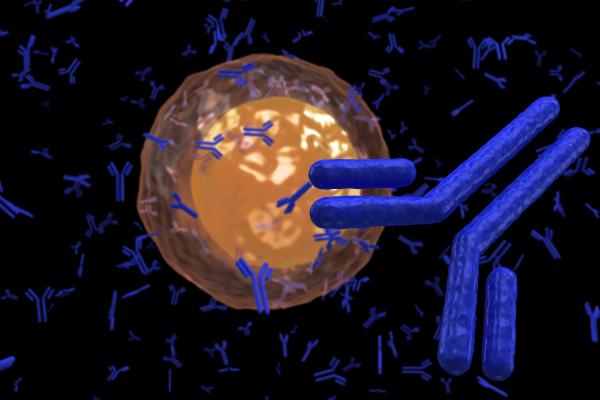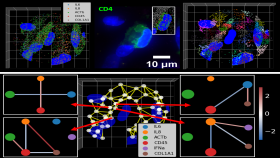A group of graduate students from the Georgia Institute of Technology took a whirlwind trip to the cradle of the biotechnology industry last month to learn from the experts and make connections within the growing field of cell and tissue engineering.
The 13 students, trainees from the Cell and Tissue Engineering Program (CTEng) supported by NIH’s National Institute of General Medical Science and based in the Petit Institute for Bioengineering and Bioscience, visited the South San Francisco headquarters of Genentech, the company often credited with launching the biotech industry.
Though the trip was a blur – Tuesday evening arrival, Wednesday tour of Genentech, Wednesday night flight back to Atlanta – it was a red-eye opening experience that left a deep impression on the students.
“I didn’t realize how much of an academic environment there was,” says Alexandra Atalis, a second-year Ph.D. student in the Wallace H. Coulter Department of Biomedical Engineering. “For one thing, they have a postdoc program.”
The Georgia Tech group, which featured seven bioengineering students and six biomedical engineering students, heard presentations about the company’s research as well as its rich history. The company was founded in 1976 by venture capitalist Robert Swanson and biochemist Herbert Boyer after Swanson had learned about the recombinant DNA technology pioneered by Boyer and geneticist Stanley Cohen.
The students also got a tour of the facility, “and that was cool to see,” says Erin Edwards, a bioengineering Ph.D. student. “They had a fully-automated testing system – robots transferring nanoscale samples through a variety of assays. But we also saw familiar things like microscopy facilities that are similar to what we’re used to at Georgia Tech. It illustrated to me how far out on the cutting edge we are at Tech.”
Like Atalis, Edwards was impressed with the academic-like atmosphere at Genentech, which is not typical in an industry setting, according to CTEng Director Andrés García, professor in the Woodruff School of Mechanical Engineering and a Petit Institute faculty member.
“They’re not just interested in developing a pipeline. There’s a big focus on research and a push to publish in academic journals,” Edwards says. “It’s nice to see that there’s an opportunity to do basic research in an industry setting.”
The Georgia Tech group began the day with a Genentech history lesson. In the early 1970s, biochemist Herbert Boyer and geneticist Stanley Cohen pioneered a new scientific field called recombinant DNA technology. After hearing about this development, Swanson called Boyer and what was supposed to be a 10-minute meeting turned into three hours. When they were finished, Genentech was born.
Then the students received “a presentation geared toward research, something we’re used to hearing,” says Edwards, who works in the lab of Petit Institute researcher Susan Thomas. “But we also were exposed to things we don’t see very often – robots that transfer small nanoscale samples through a variety of testing. That was a cool thing to see, a fully automated assembly line.”
There was a personal connection to Genentech for Atalis, who is interested in cancer immunotherapy and works in the lab of Petit Institute faculty member Krishnendu Roy, a Coulter Department professor whose focus is on immunoengineering. Much of Genentech’s research is in immunology.
“Monoclonal antibody therapy is one of their main areas of focus,” says Atalis, referring to Avastin, a leading cancer drug made by Genentech. “My mother, who has been battling ovarian cancer for the past five years, recently used Avastin as part of her drug regimen. So, going behind the scenes at the company that makes this important drug had a deep personal meaning for me.”
CONTACT:
Jerry Grillo
Communications Officer II
Parker H. Petit Institute for
Bioengineering and Bioscience
Media Contact
Jerry Grillo
Communications Officer II
Parker H. Petit Institute for
Bioengineering and Bioscience
Keywords
Latest BME News
Courses in the Wallace H. Coulter Department of Biomedical Engineering are being reformatted to incorporate AI and machine learning so students are prepared for a data-driven biotech sector.
Influenced by her mother's journey in engineering, Sriya Surapaneni hopes to inspire other young women in the field.
Coulter BME Professor Earns Tenure, Eyes Future of Innovation in Health and Medicine
The grant will fund the development of cutting-edge technology that could detect colorectal cancer through a simple breath test
The surgical support device landed Coulter BME its 4th consecutive win for the College of Engineering competition.
New research from Georgia Tech helps doctors predict how therapies will interact with a child's immune system, potentially improving outcomes and reducing risks.
Georgia Tech researchers reveal the dynamic role of inhibitory neurons in spatial memory and learning










